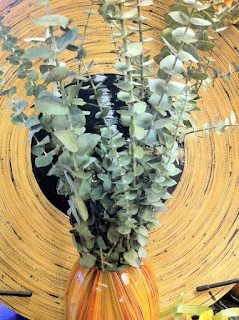As part of our 125th
Anniversary celebration at Stein Your Florist Co. we are sharing a year of
floral education, November 1, 2012 thru October 31, 2013. Each day we will post
something new on our Facebook page to share our knowledge of our favorite things,
flowers and plants and we'll be updating our blog every 5 days or so. No need
for pencils and notebooks, just sharing some simple lessons in floristry.
 Day 111 – The
Norfolk Island Pine Tree, known botanically as Araucaria heterophylla, is
native to Norfolk Island in the South Pacific between Australia and New
Zealand. The ideal indoor climate for this species is bright and cool, with
daytime temperatures ranging from 60 to 70 degrees and slightly cooler at
night. Although the Norfolk Island pine will adapt to bright indirect light,
the plant will look its best with a couple of hours of direct sunlight daily.
Day 111 – The
Norfolk Island Pine Tree, known botanically as Araucaria heterophylla, is
native to Norfolk Island in the South Pacific between Australia and New
Zealand. The ideal indoor climate for this species is bright and cool, with
daytime temperatures ranging from 60 to 70 degrees and slightly cooler at
night. Although the Norfolk Island pine will adapt to bright indirect light,
the plant will look its best with a couple of hours of direct sunlight daily.
Day 112 – Baby Blue
Eucalyptus is a heavily scented grey green/blue foliage with round to heart
shaped leaves. It has a long vase life and is easily dried or preserved for
even longer life. In both fresh and dried form eucalyptus not only looks
stunning, but its leaves may be used as an air freshener and in medicinal teas.
Day 113 - Kale or
borecole is a form of cabbage in which the central leaves do not form a head.
It is considered to be closer to wild cabbage than most domesticated forms.
Many varieties of kale and cabbage are grown mainly for their ornamental
leaves, which are brilliant white, red, pink, lavender, blue or violet in the
interior of the rosette. Ornamental kale is as edible as any other variety.
Day
114 - Spanish moss, Tillandsia usneoides, is a flowering plant that grows upon
larger trees, commonly the Southern
Live Oak or Bald Cypress in the
southeastern United States. Spanish moss has been used for various purposes,
including building insulation, mulch, packing material, mattress stuffing, and
fiber. In the early 1900s it was used commercially in the padding of car seats.
In 1939 over 10,000 tons of processed Spanish moss was produced. It is
still collected today in smaller quantities for use in arts and crafts, or for
beddings for flower gardens. Spanish moss is also known to have been worn by
the women of the Timucua Indian tribe. It is also used by some as the filling
for traditional voodoo dolls.
Day
115 - Pussy willow is a name given to many of the smaller species of the genus
Salix (willows and sallows) when their furry catkins are young in early spring.
Since the Chinese like numerous blossoms on a branch, the many buds of the
pussy willow make it a favorite flower for Chinese New Year. The fluffy white
blossoms of the pussy willow resemble silk, and they soon give forth young
shoots the color of green jade. Chinese enjoy such signs of growth, which
represent the coming of prosperity.




























